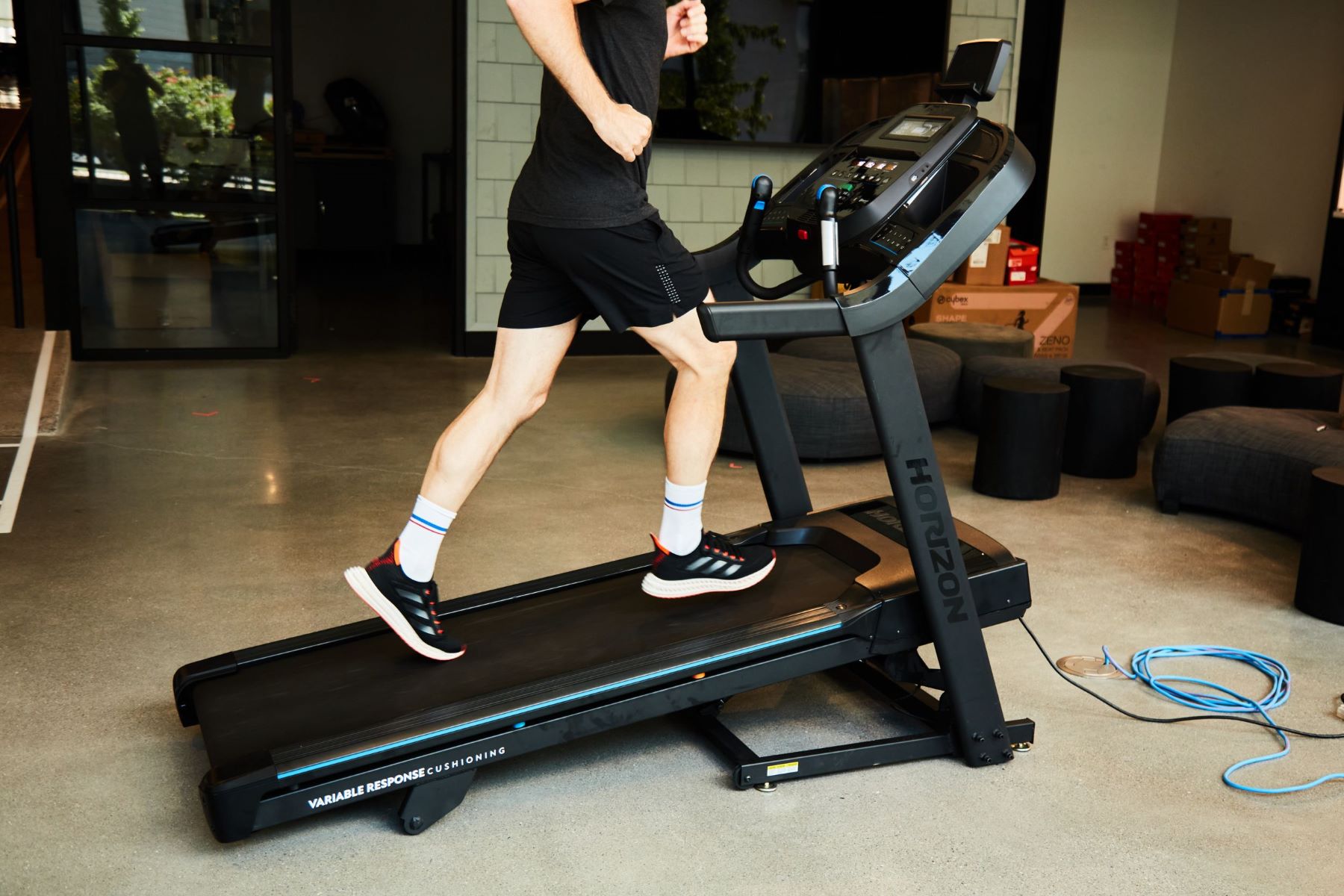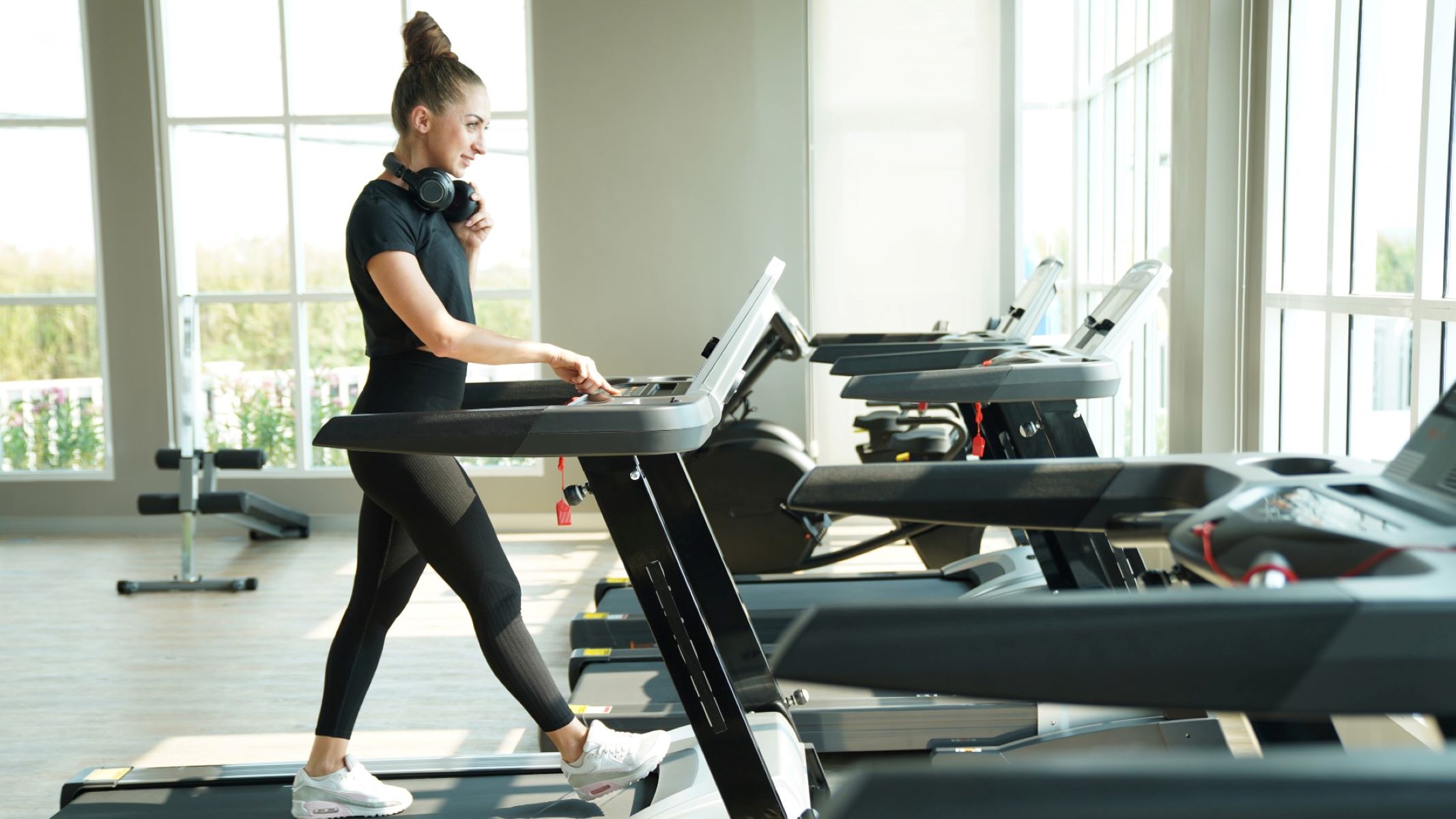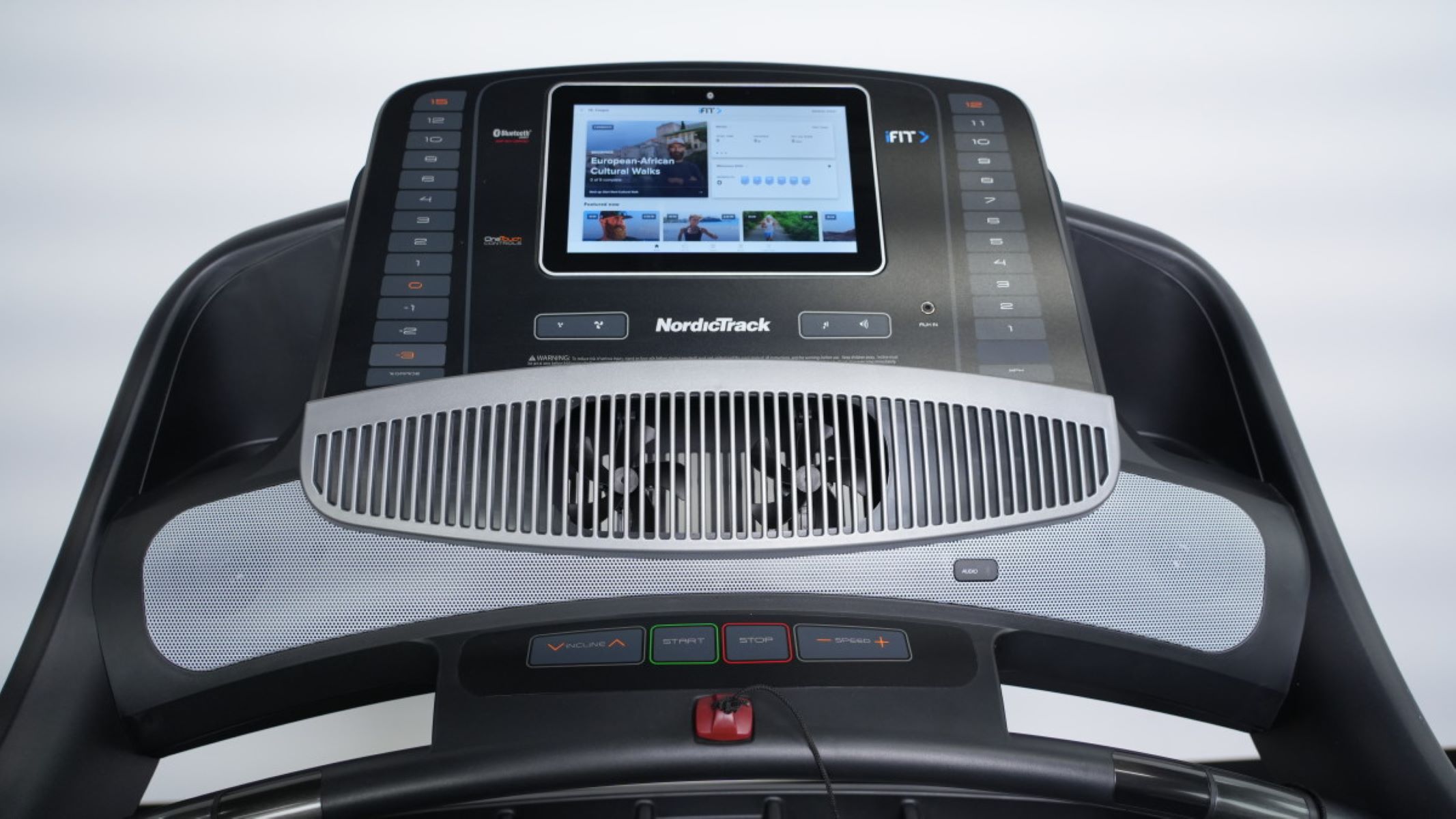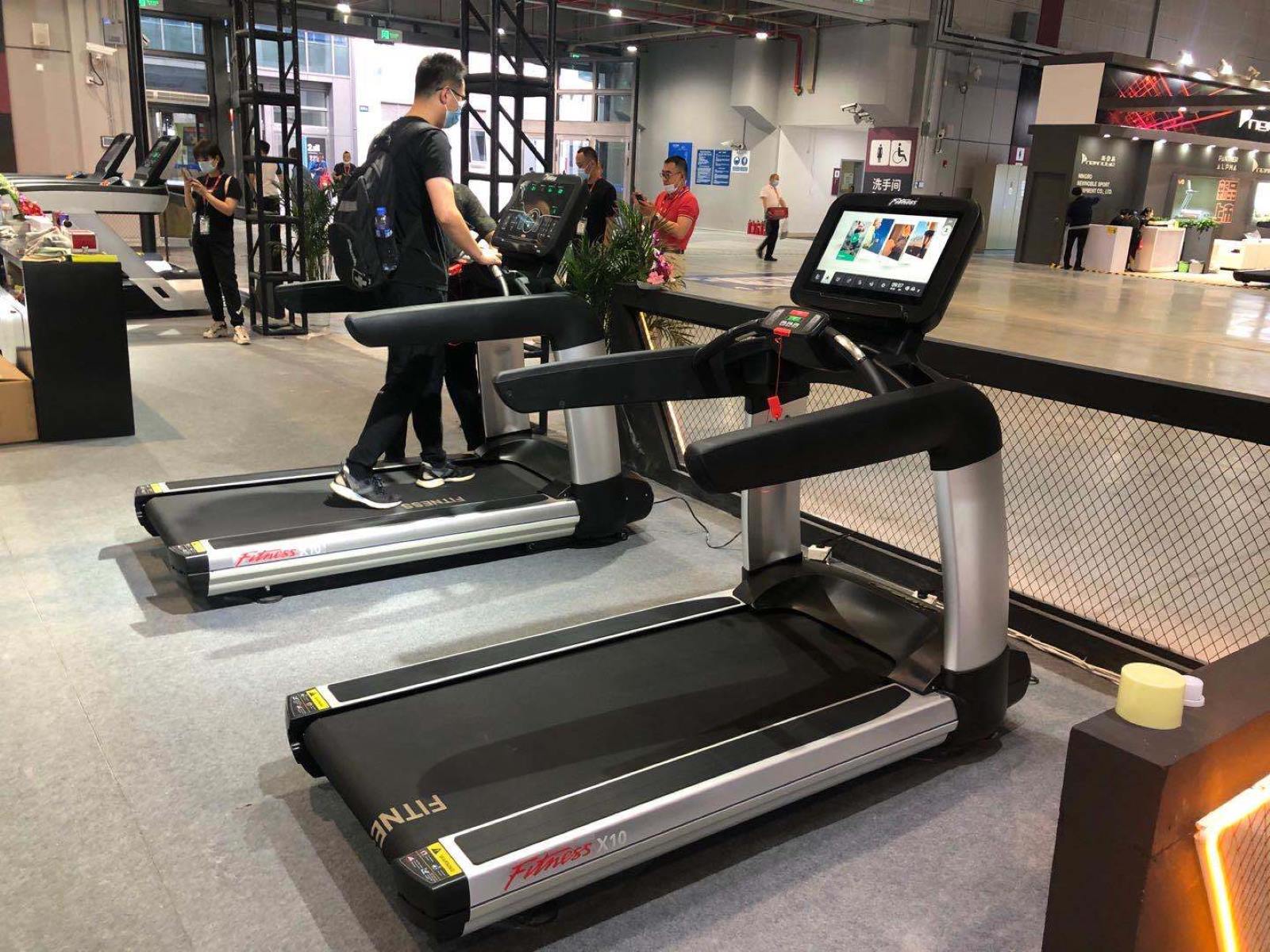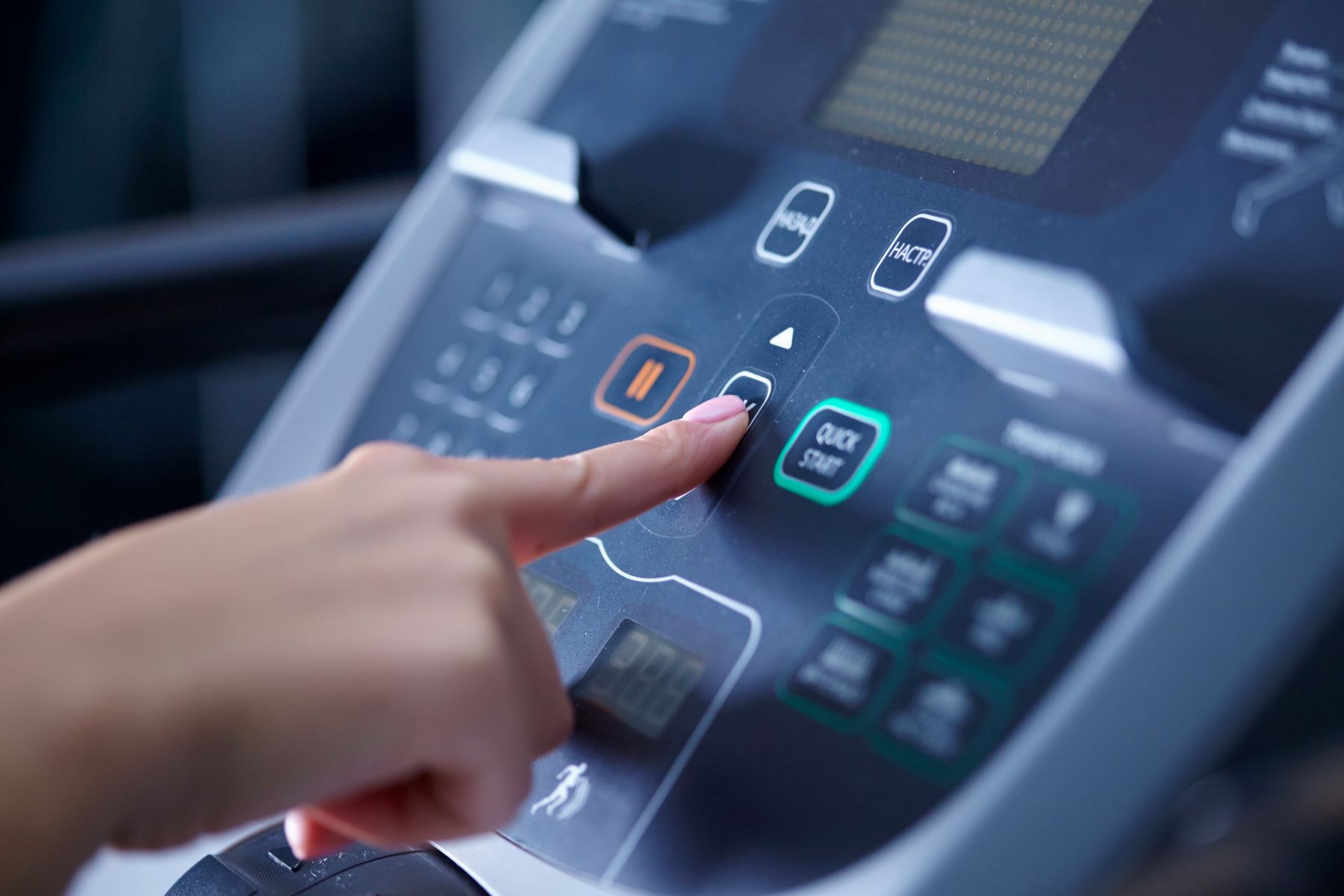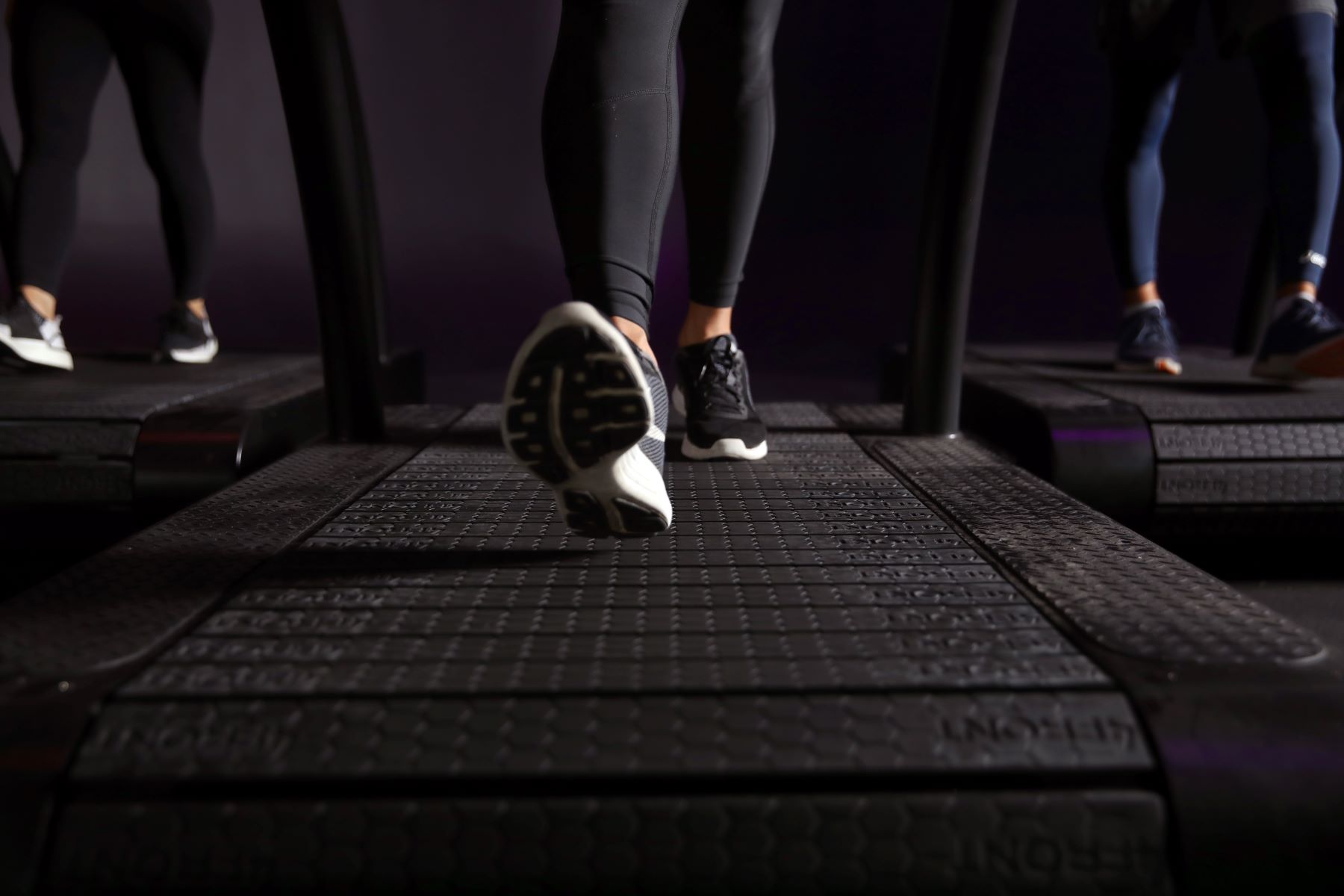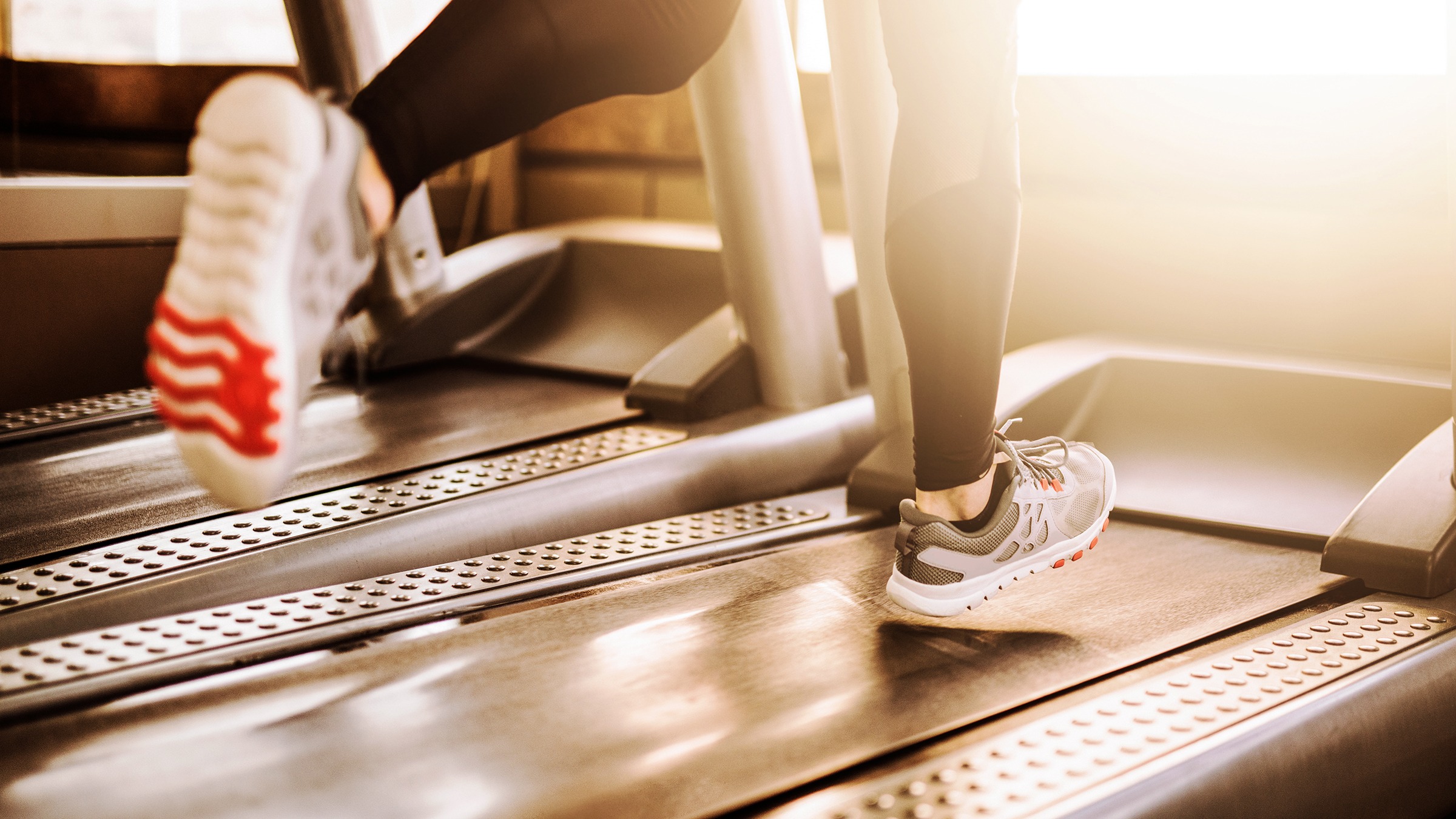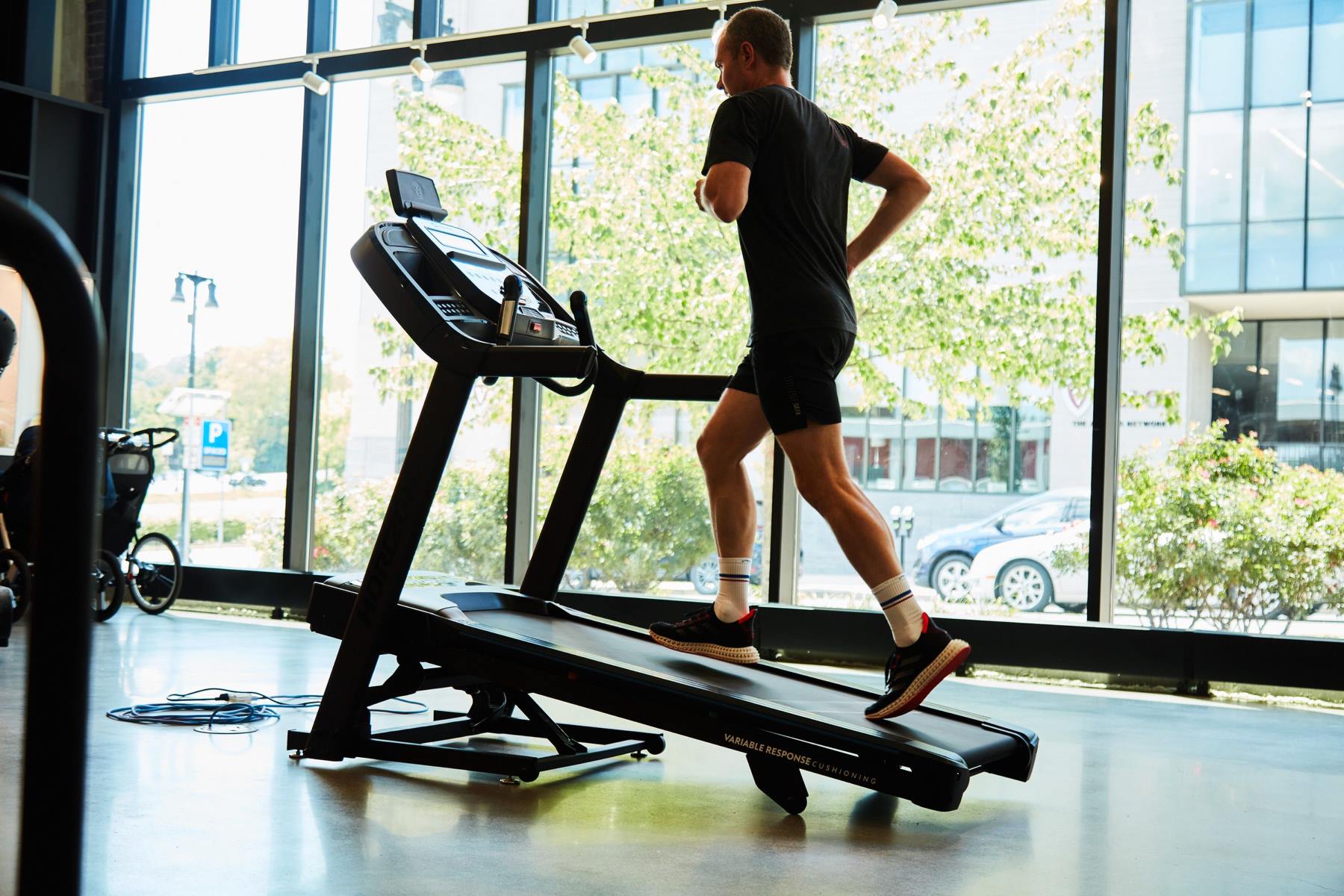

Featured
What Is Incline In Treadmill
Modified: January 2, 2024
Discover the benefits of incline in treadmill workouts. Find out how you can reach your fitness goals with featured incline features.
Introduction
Welcome to the world of fitness and exercise! Whether you’re a seasoned fitness enthusiast or just starting to embark on your fitness journey, treadmills are likely an integral part of your workout routine. They offer a convenient and effective way to stay active, burn calories, and improve cardiovascular health without leaving the comfort of your home or gym.
When it comes to treadmill workouts, you may have come across the term “incline” at some point. Incline, also known as incline gradient or treadmill slope, refers to the angle at which the running deck is elevated. It allows you to simulate uphill terrain and increase the intensity of your workout.
The incline feature on a treadmill has gained popularity in recent years, and for good reason. It offers a multitude of benefits that can take your workout to the next level. But what exactly is the purpose of incline in treadmill workouts, and why is it important to incorporate it into your routine? Let’s dive into the world of incline and discover the advantages it brings to your fitness journey.
In this article, we’ll explore the definition of incline, discuss the importance of incline in treadmills, highlight the benefits of using incline, explain its impact on muscles and calorie burn, provide tips on adjusting and controlling incline, touch on safety considerations and precautions, and disclose common mistakes to avoid when using incline.
Definition of Incline
Before we delve into the details of incline in treadmills, let’s start by defining what exactly incline means. Incline refers to the slope or angle at which the running deck of a treadmill is elevated. It allows you to simulate uphill terrain by tilting the deck upwards, creating a challenging and dynamic workout experience.
The incline feature on a treadmill is typically adjustable, offering various levels of incline to accommodate different fitness goals and abilities. You can increase or decrease the incline based on your preference and desired intensity level.
Most modern treadmills offer a range of incline options, from a minimal incline of around 0-1% to a maximum incline of up to 15%. Some advanced models even offer incline settings beyond 15% for those seeking a greater challenge.
Incline is measured in terms of percentage or degrees. For example, an incline of 5% means the running deck is elevated 5% upwards from the flat level, while an incline of 10 degrees indicates the deck is tilted at a 10-degree angle.
It’s essential to note that incline is specific to treadmills and different from speed. While speed refers to how fast the belt moves, incline focuses on the angle of the deck. Combining both speed and incline can significantly enhance the effectiveness of your workout and provide a more comprehensive fitness experience.
Importance of Incline in Treadmills
Now that we understand what incline means in the context of treadmills, let’s explore the importance of incorporating incline into your treadmill workouts. Whether you’re a beginner or an experienced athlete, utilizing the incline feature can offer numerous benefits that can elevate your fitness journey.
First and foremost, incline adds variety and challenges to your workouts. Running or walking on flat terrain can become monotonous over time, leading to boredom and a potential decrease in motivation. By incorporating incline, you introduce a new element that keeps your workouts exciting and engaging. The varying levels of incline allow you to mimic outdoor conditions such as running uphill, which can make your workouts more dynamic and enjoyable.
One of the key benefits of incorporating incline into your treadmill workouts is the increased calorie burn. When you walk or run on an incline, your muscles have to work harder to overcome gravity and move your body upward. This increased effort results in a higher expenditure of energy, leading to a greater number of calories burned compared to exercising on a flat surface. In fact, studies have shown that walking or running on a steep incline can burn up to 50% more calories than the same activity on a flat surface.
Incline workouts also provide a great cardiovascular challenge. By elevating the running deck, you increase the intensity of your workout, forcing your heart and lungs to work harder to supply oxygen-rich blood to your muscles. This helps improve your cardiovascular endurance, strengthening your heart and improving your overall fitness level.
In addition to the physical benefits, utilizing incline on a treadmill can also enhance your muscle strength and development. Walking or running on incline engages different muscle groups, including your calves, hamstrings, glutes, and quadriceps, to a greater extent than exercising on a flat surface. This can help tone and strengthen these muscles, contributing to improved lower body strength and overall muscle definition.
Another advantage of incline workouts is the potential reduction in joint stress. When you walk or run on a flat surface, there can be a significant impact on your joints, especially the knees and ankles. However, by incorporating incline into your workouts, you reduce the force of impact on these joints, making it a suitable option for individuals with joint issues or those looking for low-impact exercise options.
Incline workouts also offer great versatility and flexibility. Whether you’re training for a hilly race, aiming to improve your endurance, or simply want to add variety to your workouts, adjusting the incline allows you to customize your treadmill sessions to meet your specific goals. You can increase the incline for a more challenging workout or decrease it for a recovery or warm-up session.
Incorporating incline into your treadmill workouts not only provides physical benefits but also helps to break through exercise plateaus and keeps you motivated and engaged in your fitness routine.
Benefits of Using Incline in Treadmills
Using incline in your treadmill workouts offers a multitude of benefits that can enhance your overall fitness and take your exercise routine to the next level. Let’s explore some of the key advantages of incorporating incline into your treadmill sessions:
- Increased calorie burn: Walking or running on an incline requires more energy and effort compared to exercising on a flat surface. This increased exertion leads to a higher calorie burn, helping you achieve your weight loss or maintenance goals more efficiently.
- Improved cardiovascular endurance: Working out on an incline challenges your cardiovascular system, forcing your heart and lungs to work harder. This improves your aerobic capacity and endurance, allowing you to exercise for longer durations without feeling fatigued.
- Enhanced muscle strength and tone: Incline workouts engage additional muscle groups, such as your glutes, hamstrings, and calves, to a greater extent. This helps increase muscle strength and tone in your lower body, giving you a more sculpted and defined physique.
- Simulates outdoor running conditions: By adjusting the incline on your treadmill, you can simulate the experience of running or walking uphill. This prepares you for outdoor activities and races that involve varying terrain, improving your outdoor performance.
- Reduced joint impact: Walking or running on an incline reduces the impact on your joints, especially the knees and ankles. This makes incline workouts a suitable option for individuals with joint issues or anyone looking to minimize joint stress during their exercise sessions.
- Increased muscle activation: Incline workouts activate muscles in your lower body to a greater degree, resulting in more comprehensive muscle activation and development. This can lead to improved overall strength and functional fitness.
- Diversifies your workouts: Incorporating incline into your treadmill sessions adds variety to your workouts, preventing boredom and keeping you motivated. It offers a different challenge and experience from exercising on a flat surface, making your workouts more interesting and engaging.
- Customizable intensity: Adjusting the incline on your treadmill allows you to customize the intensity of your workouts. You can increase the incline for a more challenging session or decrease it for a recovery or warm-up workout.
By harnessing the benefits of incline in your treadmill workouts, you can maximize your fitness gains and optimize your exercise routine. It’s an effective tool that can add excitement, variety, and intensity to your workouts, helping you achieve your fitness goals more effectively.
Impact on Muscles and Calorie Burn
Utilizing incline in your treadmill workouts has a significant impact on both your muscles and calorie burn. Let’s explore how incline affects these two key aspects of your fitness journey:
Muscle Activation and Development: Walking or running on an incline engages a greater number of muscles compared to exercising on a flat surface. The steeper the incline, the more muscles are activated. Incline workouts target muscles in your lower body, including your glutes, hamstrings, quadriceps, and calves, to a higher degree. These muscles have to work harder to overcome gravity and propel your body upward. This increased muscle activation leads to enhanced muscle strength, endurance, and toning in the targeted areas, resulting in improved lower body muscular development.
Caloric Expenditure: One of the significant advantages of using incline on a treadmill is the increased calorie burn. Walking or running on an incline elevates your heart rate and intensifies your workout, resulting in a higher energy expenditure. The added challenge of uphill terrain requires your muscles to work harder to move your body against gravity, leading to a greater calorie burn. In fact, research has shown that incline workouts can burn up to 50% more calories compared to exercising on a flat surface. The exact number of calories burned will depend on factors such as your body weight, speed, and the incline level, but incorporating incline into your treadmill workouts can undoubtedly boost your calorie-burning potential.
Not only does incline increase the intensity of your workout and maximize calorie burn, but it also provides a time-efficient way to achieve your fitness goals. By using incline, you can achieve a higher level of exertion and calorie burn in a shorter amount of time compared to exercising on a flat surface at the same speed.
It’s important to note that the impact on muscles and calorie burn will vary depending on the incline level and the individual’s fitness level. Beginners might experience a more significant impact as their bodies adapt to the added challenge, while seasoned athletes may need to increase the incline to continue challenging their muscles and maximizing their calorie burn.
Incorporating incline into your treadmill workouts not only transforms your exercise routine into a more efficient calorie-burning session, but it also helps shape and strengthen your lower body muscles. It’s a valuable tool that allows you to target specific muscle groups and achieve a well-rounded and comprehensive workout.
Adjusting and Controlling Incline on a Treadmill
Adjusting and controlling the incline on a treadmill is relatively simple and allows you to customize your workout experience according to your fitness goals. Most modern treadmills offer easy-to-use controls that enable you to adjust the incline with just a press of a button or a touch of a screen. Here’s a step-by-step guide on how to adjust and control the incline on a treadmill:
- Consult the user manual: Before attempting to adjust the incline on your treadmill, it’s essential to refer to the user manual provided by the manufacturer. This will provide specific instructions for your treadmill model and ensure you follow the correct procedure.
- Locate the incline controls: On most treadmills, the incline controls can be found on the console or the handlebars. They are usually labeled with up and down arrow buttons or plus and minus symbols.
- Start at a flat or minimal incline: If you’re just starting your workout or are new to using incline, it’s advisable to begin at a flat or minimal incline level. This will allow your body to warm up gradually and adapt to the added challenge. You can always increase the incline as you progress through your workout.
- Gradually increase the incline: As you feel more comfortable and ready to increase the intensity, use the incline controls to gradually raise the elevation of the running deck. Increase the incline by small increments, such as 1% or 2%, until you reach your desired level. Pay attention to your body and adjust the incline according to your fitness level and comfort.
- Experiment with different incline levels: One of the benefits of using incline on a treadmill is the versatility it offers. Take the opportunity to experiment with different incline levels during your workout. Varying the incline can help simulate outdoor conditions, add variety to your routine, and target different muscle groups.
- Monitor your form and intensity: As you adjust the incline, pay attention to your form and breathing. Maintain proper posture, engage your core, and breathe deeply to ensure efficient and safe exercise. Adjust the incline according to your desired intensity level and listen to your body. If you feel any discomfort or strain, decrease the incline or take a break altogether.
Remember to listen to your body and progress at a pace that suits your fitness level. It’s always a good idea to start gradually and gradually increase the incline over time as your body adapts and becomes more conditioned.
Controlling the incline on a treadmill allows you to personalize your workout, target specific muscle groups, and challenge yourself according to your fitness goals. By incorporating incline variations into your routine, you can add excitement, intensity, and effectiveness to your treadmill workouts.
Safety Considerations and Precautions
While using the incline feature on a treadmill can bring numerous benefits, it’s crucial to prioritize safety and take certain precautions to ensure a safe and effective workout. Here are some essential safety considerations to keep in mind when using incline on a treadmill:
- Consult with a healthcare professional: If you have any underlying health conditions or concerns, consult with a healthcare professional before incorporating incline into your treadmill workouts. They can provide personalized advice and guidance based on your specific needs.
- Proper footwear: Ensure you wear proper athletic footwear with good arch support and cushioning to maintain stability and minimize the risk of foot-related injuries.
- Warm-up: Before adjusting the incline, it’s essential to warm up your muscles with some light cardio exercises such as walking or jogging on a flat surface. This prepares your body for the added challenge and reduces the risk of muscle strains or injuries.
- Start with a low incline: If you’re new to using incline, start with a low incline level and gradually increase as you become more comfortable and confident. This allows your body to adjust and adapt to the added challenge without placing excessive stress on your muscles and joints.
- Use the handrails with caution: While it may be tempting to hold onto the handrails for support, try to avoid relying on them too much. Allow your core and leg muscles to bear the majority of the workload. However, if you feel unsteady or require additional support, it’s fine to lightly touch the handrails as needed.
- Monitor your form: Pay attention to your posture and form while using incline on a treadmill. Keep your shoulders back, engage your core, and maintain a natural and upright stance. Avoid leaning too far forward or backward, as this can put strain on your back and affect your balance.
- Stay hydrated: It’s important to stay hydrated throughout your workout, especially when using incline. Take regular water breaks and keep a water bottle nearby to replenish fluids and prevent dehydration.
- Gradually decrease incline for cool-down: Just as you warm up before your workout, it’s essential to cool down properly. After you’ve completed your incline workout, gradually decrease the incline to a flat position to gradually reduce your heart rate and allow your muscles to recover.
- Listen to your body: Pay attention to any signs of discomfort or pain during your workout. If you experience any unusual symptoms or feel excessive strain, stop exercising and seek medical advice if needed. It’s better to err on the side of caution and prioritize your safety.
By following these safety considerations and taking necessary precautions, you can minimize the risk of injuries and ensure a safe and enjoyable workout experience while using incline on a treadmill.
Common Mistakes to Avoid When Using Incline
While utilizing incline in your treadmill workouts can provide numerous benefits, it’s important to be aware of common mistakes that can hinder your progress or potentially lead to injuries. By avoiding these mistakes, you can optimize your incline workouts and ensure a safe and effective exercise routine. Here are some common mistakes to steer clear of when using incline on a treadmill:
- Starting with a high incline level: One of the most common mistakes is starting with a high incline level, especially for beginners. It’s crucial to begin at a lower incline and gradually increase the elevation as your body adjusts and becomes more conditioned. Starting too high can put excessive stress on your muscles and joints, increasing the risk of injury.
- Relying too heavily on the handrails: While it’s natural to hold onto the handrails for support, avoid relying too heavily on them. Gripping the handrails too tightly or leaning on them can disrupt your natural gait and diminish the effectiveness of the workout. Instead, focus on engaging your core and using your lower body to maintain balance and stability.
- Leaning too far forward or backward: Maintaining proper form is essential when using incline. Avoid leaning too far forward or backward while exercising, as this can strain your back and affect your balance. Keep your posture upright and aligned, engaging your core muscles for stability.
- Skipping warm-up and cool-down: Neglecting to warm up properly before starting your incline workout and skipping the cool-down afterward can increase the risk of muscle strains and injuries. Dedicate a few minutes to warm up your body with light cardio exercises and gradually decrease the incline to a flat position for your cool-down, allowing your muscles to recover gradually.
- Overexertion: Pushing yourself too hard and attempting to maintain a high incline for an extended period can lead to overexertion and fatigue. It’s important to listen to your body and adjust the incline and intensity according to your fitness level. Gradually increase the incline and pace as you progress and build endurance.
- Neglecting hydration: Hydration is crucial during any workout, including incline workouts. Dehydration can lead to fatigue and decreased performance. Make sure to stay properly hydrated by drinking water before, during, and after your treadmill workout.
- Ignoring safety considerations: Safety should always be a priority. Ignoring safety considerations, such as using improper footwear, not consulting a healthcare professional if needed, or disregarding proper form, can lead to injuries. Take the time to follow safety guidelines and take necessary precautions to ensure a safe workout experience.
By being mindful of these common mistakes and making adjustments to your workout routine, you can optimize your incline workouts and minimize the risk of injuries. Focus on maintaining proper form, gradually increasing the incline, and listening to your body to ensure a safe and effective incline treadmill workout.
Conclusion
Incline is a valuable feature in treadmills that offers a wide range of benefits for your fitness journey. Incorporating incline into your treadmill workouts provides variety, challenges, and customization options, enhancing the effectiveness and enjoyment of your exercise routine.
From increased calorie burn and improved cardiovascular endurance to enhanced muscle strength and tone, incline workouts offer a well-rounded approach to achieving your fitness goals. By adjusting the incline, you can simulate outdoor running conditions, target specific muscle groups, and customize the intensity according to your preferences and fitness level.
However, it’s essential to prioritize safety and follow necessary precautions when using incline on a treadmill. Be mindful of proper form, gradually increase the incline level, and listen to your body to avoid common mistakes and reduce the risk of injuries. Consult with a healthcare professional if needed, wear appropriate footwear, and remember to warm up and cool down properly.
Using incline in your treadmill workouts is a fantastic way to spice up your routine, burn more calories, challenge your body, and achieve optimal results. So, embrace the incline, push yourself out of your comfort zone, and enjoy the benefits it brings to your fitness journey.
